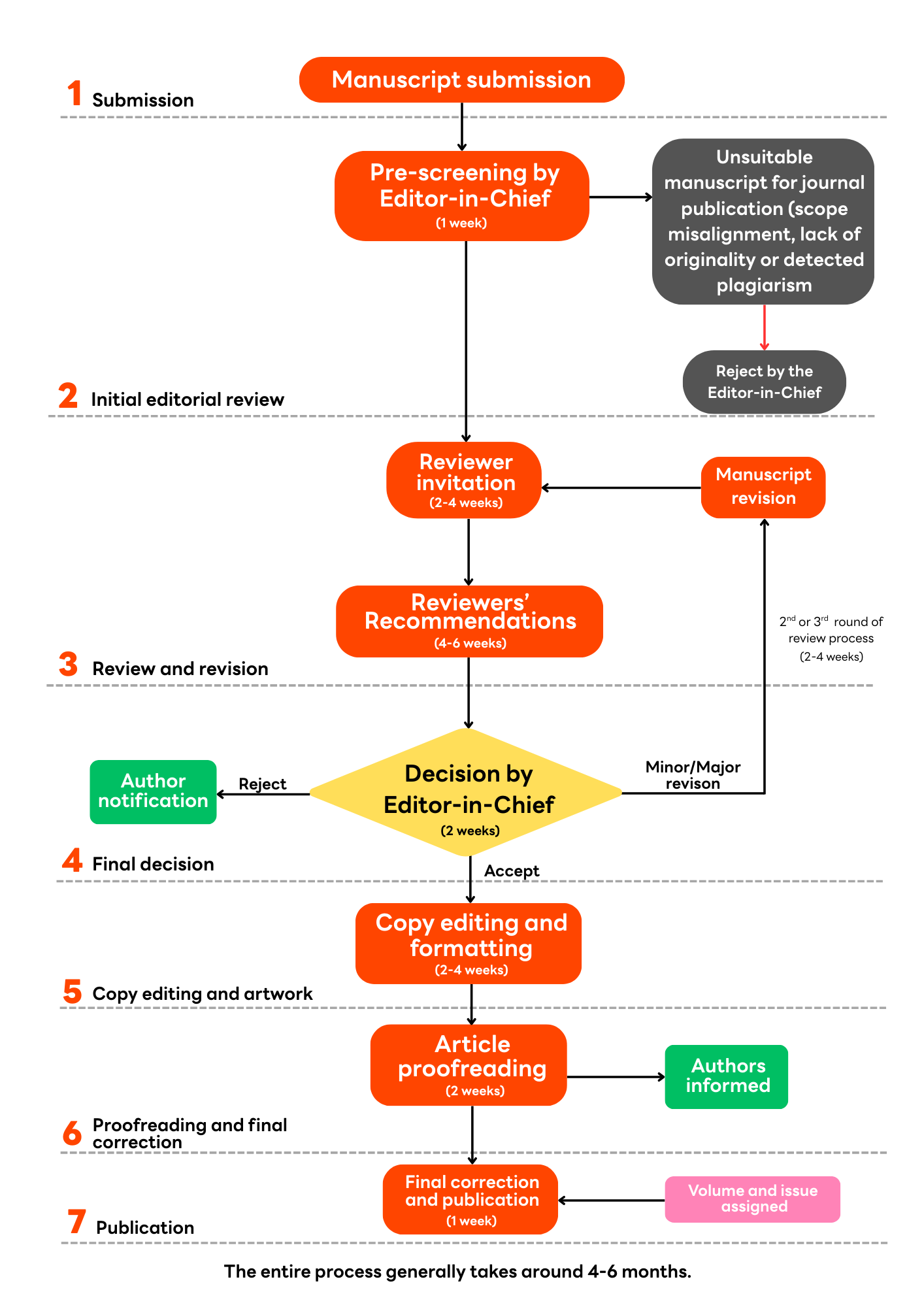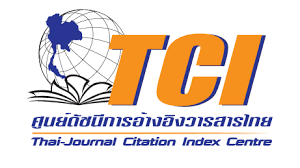Peer Review Process
All submissions to Science and Engineering Connect (SEC) are double-blind peer-reviewed for scientific quality by at least three reviewers from various outside institutions. Only manuscripts that have not been previously published or are not under consideration for publication elsewhere can be submitted for publication in SEC. Author of a manuscript accepted for publication should agree not to publish any version of their work, in English or any language, without a written consent from SEC. The production process would be undertaken after the manuscript has been accepted for publication in SEC.
 The peer review process of Science and Engineering Connect (SEC) involves the following steps:
The peer review process of Science and Engineering Connect (SEC) involves the following steps:
1. Submission
A corresponding or submitting author submits a manuscript file, along with figures and tables, and complete the necessary information to SEC via the ThaiJO system.
2. Initial editorial review
The Editor-in-Chief conducts a preliminary screening to ensure that the scope of a manuscript aligns with the journal's aims and guidelines. Manuscripts that do not meet these criteria would be declined without further review. An evaluation of originality, structure, quality of figures and references is also performed. If the quality is satisfactory, the manuscript would be peer reviewed.
3. Formal review and revision
SEC implements a double-blinded review system with at least 3 expert reviewers. The editorial office would anonymize a submission by removing authors' names and affiliations, e-mail addresses and acknowledgments. Invited reviewers are expected to be affiliated with differing institutions from those of the corresponding author. In cases where responses are not received, additional invitations may be sent, if necessary, to ensure the requisite number of reviewers.
4. Final decision
The Editor-in-Chief would make the final decision on whether to accept, reject or request revision for a manuscript based on feedback from the reviewers. If there is a significant variance in the comments and responses of the reviewers, an additional reviewer may be invited before the decision is made. The author would be notified of the outcome (acceptance, rejection or a request for major or minor revision) and provided with relevant comments from the reviewers through the online system.
If a manuscript requires a revision, the authors would need to incorporate feedbacks provided by the reviewers into the manuscript and resubmit it for a second or more round of review. The resubmitted materials should include the revised manuscript with the changes highlighted, along with a point-by-point reply to the comments and/or a rebuttal letter. Typically, authors are given a two-week timeframe for a minor revision and four weeks for a major revision.
5. Copy editing and artwork
At this stage, an accepted manuscript undergoes a copy editing and formatting process to prepare for publication.
6. Proofreading and final correction
After an article is formatted, it would be sent back to the authors for review to ensure accuracy. Once any necessary corrections have been made, the formatted article would undergo a final verification by the authors. Their confirmation would then be communicated back to the Editor-in-Chief.
7. Publication
An article would be published online once all processes have been completed. The article would be assigned a volume and issue numbers. The entire process, from initial submission to final publication, generally takes around 4-6 months.




